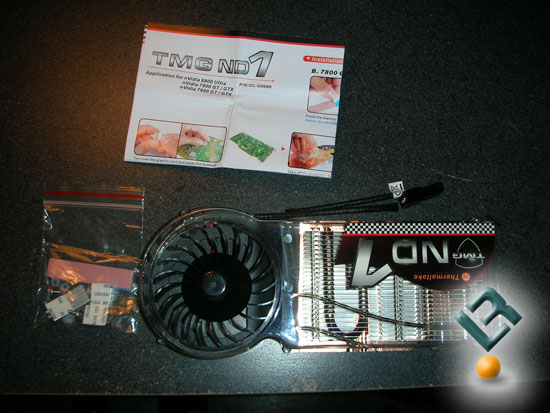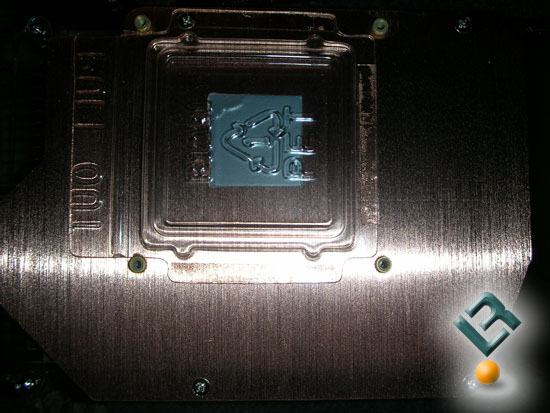Thermaltake TMG ND1 GeForce GPU Cooler
A Closer Look

So, a couple days later, I was greeted by a vacuum sealed package that made me eager to start the install.
The package consisted of the cooler itself, an install manual, two Thermaltake stickers, and a bag of parts, containing screws, washers, memory sinks, a perforated PCI Bracket, and a gum-like thermal interface.
The cooler is large and very heavy. The base of the cooler is one solid chunk of copper, to which is attached aluminum fins and heatpipes. I would have liked to have seen the entire unit made out of copper, but that would have driven cost of the unit up considerably and can see why Thermaltake decided to use the aluminum instead.
Seeing this cooler can be used with 6800 Ultra, 7800 GT/GTX and 7900GT/GTX, Thermaltake includes Aluminum sinks for the underside of the card in order to cool the extra memory modules that a card with 512mb of Memory would have. It would have been nice to see these heat sinks to be made of copper, but once again, it would have driven up the cost of the unit.
A nice touch by Thermaltake was the addition of sleaveng on the wires that power the fan. It gives the unit a nice sleek and polished look, and I give Thermaltake great kudos for paying attention to such a small detail.
The first thing I did was check the base of the cooler. Thermaltake did a good job machining the base, although it could have been done better. The base is clearly level, but machining marks are prevalent both by the eye and by running your nail across the base of the cooler.

Also, Thermaltake chose to apply a TIM, and cover it with a plastic cover to prevent the TIM from being disturbed during shipping. The TIM that they chose to use is very low grade, and I would wager to guess that the TIM is of lower grade than what you find on AMD’s or Intel’s stock coolers. This is not my biggest complaint though. The plastic cover was adhered with an adhesive that was a pain to remove. Not only did I need to use Isopropyl Alcohol to remove the TIM, I had to do the same with the glue from the cover. I would advise Thermaltake to not bother with the cover or the TIM for that matter. Most users apply there own TIM of choice and this is just an annoyance for most owners of the product. It would have been easier to cover the entire base with a thin piece of plastic like you see with most CPU heatsinks.
My last comment on the design of the cooler notes that Thermaltake decided not to extend the size of the cooler so that the it was one continuous piece from cooler to PCI bracket. Depending on your case there can be anywhere from a half inch to full inch gap between the cooler and the bracket. I personally believe that this will inhibit the performance of the cooler. There will be some heat that the GPU cooler has removed that is not properly exhausted from the case.

Comments are closed.